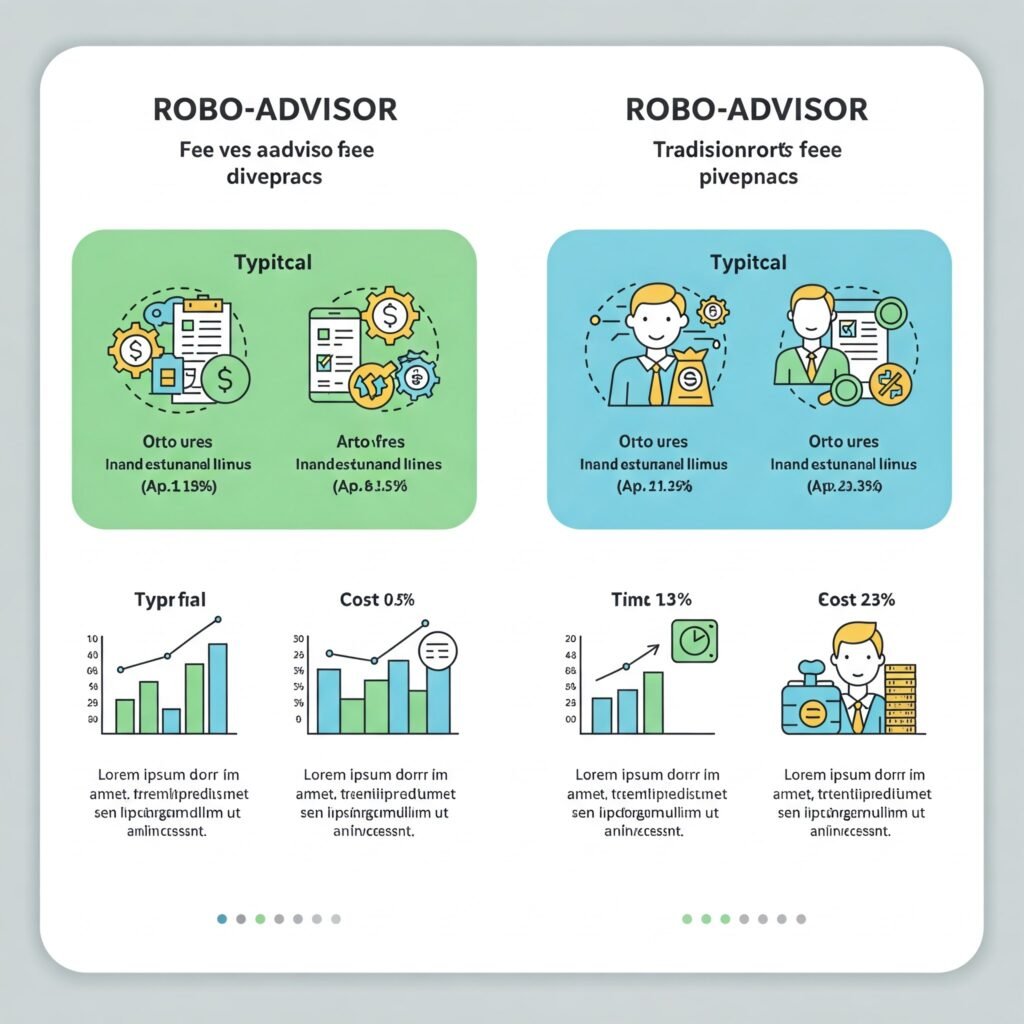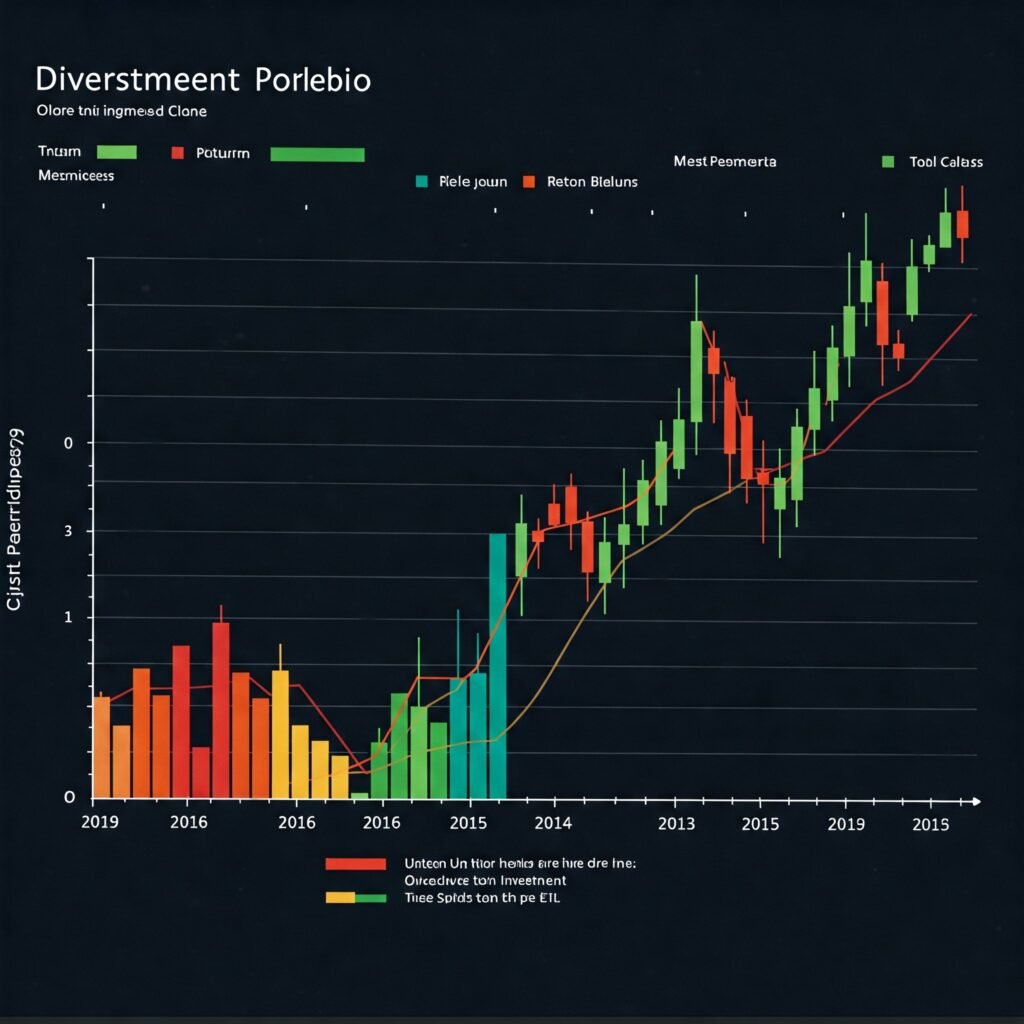Investing wisely in 2025 requires leveraging technology to maximize returns while minimizing effort. Choosing the best robo-advisors for smart investment can simplify the process, offering automated, low-cost portfolio management tailored to your goals. This guide breaks down how to select the ideal robo-advisor, ensuring your investments align with your financial aspirations.
Why Robo-Advisors Are a Smart Investment Choice
Robo-advisors use algorithms to manage your investments, offering a cost-effective alternative to traditional financial advisors. They provide diversification, automated rebalancing, and tax-loss harvesting, making them ideal for beginners and seasoned investors alike.
- Low fees: Typically 0.25%–0.50% annually, compared to 1%–2% for human advisors.
- Accessibility: Start with as little as $1 on platforms like Betterment or Wealthfront.
- Customization: Tailored portfolios based on risk tolerance and goals.

Key Factors in Choosing the Best Robo-Advisors
Selecting a robo-advisor involves evaluating several critical factors to ensure it meets your investment needs.
1. Fees and Costs
Low fees are a hallmark of robo-advisors, but they vary. For example, Betterment charges 0.25% for its digital plan, while Wealthfront requires a $500 minimum with the same fee. Compare management fees, expense ratios, and any hidden costs.
- Look for no-transaction-fee platforms.
- Check for premium tiers (e.g., Betterment Premium at 0.40% for added features).
2. Investment Options and Asset Allocation
The best robo-advisors offer diverse investment options, including ETFs, stocks, and bonds. Platforms like Vanguard Digital Advisor focus on low-cost ETFs, while SoFi Automated Investing includes fractional shares.
- Ensure the platform supports your preferred asset classes.
- Verify if it offers socially responsible investing (SRI) options for ethical portfolios.

3. User Experience and Accessibility
A user-friendly interface is crucial for tracking your investments. Apps like Acorns excel with intuitive mobile platforms, ideal for younger investors. Test demo accounts to assess ease of use.
- Check for 24/7 customer support.
- Look for mobile apps with real-time portfolio updates.
4. Financial Planning Tools
Top robo-advisors provide tools for retirement planning, goal tracking, and tax optimization. Schwab Intelligent Portfolios offers free financial planning, while Ellevest emphasizes women-focused investing strategies.
- Prioritize platforms with robust goal-setting features.
- Seek tax-loss harvesting for taxable accounts.

Top Robo-Advisors for Smart Investment in 2025
Here are three leading robo-advisors to consider, based on their features and performance:
- Betterment: Best for beginners, with no minimum deposit and comprehensive financial planning tools. Learn more.
- Wealthfront: Ideal for tax-efficient investing, offering direct indexing for high-net-worth individuals. Explore Wealthfront.
- Vanguard Digital Advisor: Perfect for low-cost ETF portfolios, backed by Vanguard’s reputation. Visit Vanguard.
How to Get Started with a Robo-Advisor
Ready to invest? Follow these steps to choose and start with a robo-advisor:
- Assess Your Goals: Define your investment objectives (e.g., retirement, home purchase).
- Compare Platforms: Use sites like NerdWallet to compare fees and features.
- Open an Account: Provide personal details and link a bank account.
- Complete Risk Assessment: Answer questions to determine your risk tolerance.
- Fund Your Account: Start with an amount you’re comfortable with, even $100.
Common Mistakes to Avoid When Choosing a Robo-Advisor
- Ignoring Fees: Even small fee differences can compound over time.
- Overlooking Tax Strategies: Not all platforms offer tax-loss harvesting.
- Chasing Trends: Stick to your risk profile instead of following market hype.
Outbound Links for Credibility:
NerdWallet – Best Robo-Advisors




